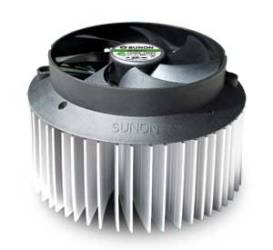 Loading... Please wait...
Loading... Please wait...- About Us
- LED Flood Lights
-
LED Lighting Projects
- Tennis Court LED Lighting Projects & Upgrades
- Netball Court LED Lighting - Case Studies & Projects
- Sporting Oval & Sports Field LED Lighting - Projects & Examples
- Lawn Bowls LED Lighting Projects & Upgrades
- General Area and Security LED Lighting - Projects & Applications
- Factory and Warehouse LED Lighting Projects & Applications
- Industrial LED Lighting Applications and Projects
- Help & Information
- Blog
- Contact Us
- Home
- Help & Information
- LED Buying Guide
- Understanding LED Lighting
- LED Light Bulb Life Time
- LED Light Bulb Active Cooling Methods
LED Light Bulb Active Cooling Methods
|
Active cooling methods using some form of electric motorised fan are generally used in commercial applications in very high power LED luminaires of greater than 20W and/or in more demanding environmental applications where thermal conduction through passive methods is limited. Sunon active cooling module for the 40W Philips Fortimo LED SLM 3000lm system. One low power exception is the 10W Philips Master MR16 LED light bulb (see below) which uses a small fan for active cooling. This is a 2008 designed and developed bulb rated at a relatively low 25,000 hours. No other major MR16 LED light bulb manufacturers have adopted the active cooling approach presumably due to the electric cooling fan being a further source of power drain, together with the fan motor being another source of LED light bulb failure. Rick Zarr from Texas Instruments states that with “life span of LEDs exceeding 35,000 hours rotating fans become the weak link in the system”. However, he also described a new system which utilises a series of small diaphragms that produce jets of air and have an L10 life span of over 100,000 hours, which refers to 90% of these devices should reach their L10 life. Philips Master 10W MR16 LED bulb with internal motorised cooling fan. The other problem with the active cooling methods is the motorised fans do not run silent. This is fine in a relatively noisy environment but many would have heard the faint whirr of motor in the Philips Master MR16 LED light bulb which can become irritating late at night where background noise is minimal. For example, in a bedroom or reading/study room. The other active cooling method which may be combined with all other methods is the use of an feedback loop which measures LED temperature such that in the event of usually high temperatures or elevated ambient temperatures, the temperature sensor/feedback loop can tell the LED driver unit to reduce the current flow to the LED, thereby reducing the heat, or even turning the LED off. This will protect the LED from damage and maintain its L70 life. However, the majority of commercial and residential customers will not need to be concerned about active cooling systems given the effectiveness of passive cooling systems in the majority of applications, as described below. Nevertheless, for those customers who have more demanding conditions we can design and/or source a suitable robust system which may utilise an active cooling system. References:Philips (2008). Elegance meets efficiency. Philips MASTER LED lamps. Koninklijke Philips Electronics N.V. LED Lighting: A Case Study in Thermal Management, Qpedia September 2009, Vol III, Issue VIII, 6-15. Extend the life of LED lighting systems with thermal management, Rick Zarr Texas Instruments, EDN Network, September 2012 |



